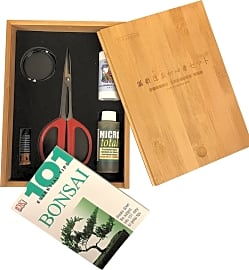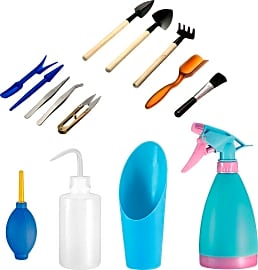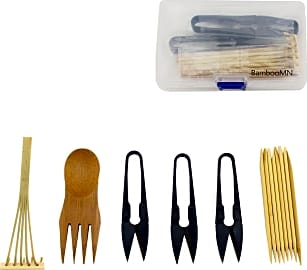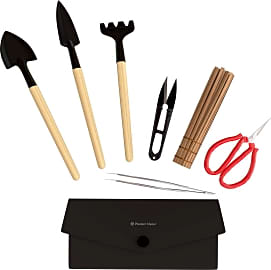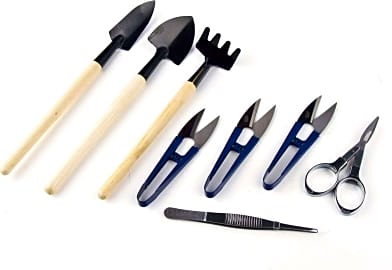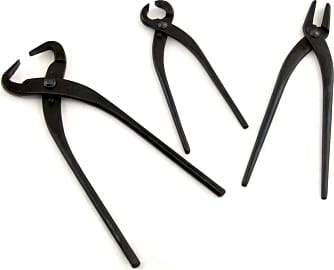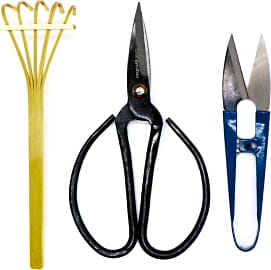The 10 Best Bonsai Tool Sets

This wiki has been updated 36 times since it was first published in February of 2016. If you're planning on trimming a tiny tree, you'll need one of these appropriately-sized bonsai tool sets. They are available with everything necessary to become meditatively absorbed in caring for your miniature creations and producing the most perfectly sculpted specimens possible, including shears, root cutters, and even small rakes to give your zen garden a finishing touch. When users buy our independently chosen editorial choices, we may earn commissions to help fund the Wiki.
Editor's Notes
December 11, 2019:
The process of growing and maintaining bonsai trees may be involved, but it is also an incredibly rewarding and relaxing pastime. As long as you have the right tools on hand, you can get started on your own bonsai project from the comfort of your own home, and without having to break the bank.
The collections of tools in this list are designed to keep your tree(s) healthy and beautiful through the seasons. Like many plants, bonsai trees require careful pruning and trimming to ensure they take the shape you envision. These sets come with pruners, trimmers, scissors, spades, rakes, and more so you can care for your plant (or garden) properly. Many of the tools featured in this list are made from durable materials, too, like carbon steel, that can hold up over time and effectively cut through miniature branches that are often surprisingly dense. We’ve also made sure to include options appropriate for both beginners and experts.
New to the list are the Kebinfen Bud & Leaves and BambooMN Trunk and Root, both of which comprise high-quality tools that can stand up to frequent use. The BambooMN Basics and Knasi Miniature are no longer on the list due to complaints about tools becoming dull prematurely.
The Bonsai Goes West
I let mine grow a little wild, and I never bothered to fertilize it.
If you weren’t brought up in Japan, you might not ever had heard of a bonsai tree were it not for a little series of movies called The Karate Kid. In the first of these films, the main characters care for a pair of bonsai trees in Mr. Miyagi’s dimly lit shed. The little trees play a metaphorical role in all the films, with an even bigger role in the third installment of the series, The Karate Kid 3, when the same characters care for a bonsai they find growing on a misty cliff side in Okinawa, Japan.
My own regard for bonsai trees grew in conjunction with a healthy interest in Asian cultures during my high school years. I finally obtained a bonsai tree of my own on a band trip to Disney World. At Epcot’s Japan section, I purchased a small but spunky bonsai tree that the cashier was kind enough to pack for me, as I told him we were flying back home the next day.
The tree was placed in a pair of cardboard boxes tied together with a little string. The boxes were unmarked and looked decidedly suspicious. I got to the airport early, ahead of my band mates, and entered the facility unaware of just how threatening I looked: A young man with an afro, a full beard, a healthy tan, and a pair of aviator sunglasses walking into an airport with nothing but a backpack and an unmarked cardboard parcel. It’s also worth noting that this was May 2002, just eight months after the horrific attacks of 9/11.
Needless to say, within 60 seconds I was swept away by airport security to a dark little room where men with strange instruments asked me endless questions and performed various tests on the tree inside the boxes. Fortunately for everyone, they were very efficient, and I didn’t even miss my flight.
Once home, the bonsai had a hard road ahead of it. I was a young man without much experience in gardening, and I didn’t bother to invest in any tools to keep my tree healthy. Bonsai trees thrive when pruned and shaped, allowing them to absorb just the right amount of nutrients from the sun and soil. I let mine grow a little wild, and I never bothered to fertilize it. Within six months, the tree began to suffer, and it died soon after.
My exposure to those Karate Kid films had led me to imbue bonsai trees with a crude kind of sentience, almost to the level of a pet. As such, I was terribly disappointed in myself for letting it die. You have the opportunity to invest in the tools that can prevent you from making the same mistakes I did, and your tree will be grateful for the many years that it’s with you.
How To Deploy The Tools In Your Set
Caring for a bonsai tree is more art than gardening, though there is significant overlap between the two in the way you care for, maintain, and shape your tree. It’s important to understand going into the process that achieving great results takes time and patience. If you try to cut your tree to a certain shape that’s too far removed from its current form, you’re liable to kill it swiftly. With the right tools at your disposal, you can create pristine trees, however, that are both an incredible expression of nature and a subtle expression of yourself.
For thicker or tougher branches, many sets will provide you with cutters that look more like wire cutters.
Most tool sets will come with a pair of bonsai clippers, which look a lot like regular scissors, but that give you a little bit more leverage and are significantly sharper than many other pairs. These are great for light trimming of leaves and thinner branches, but they aren’t intended for attacking thicker parts of the tree as that might dull them too quickly. When trimming your bonsai tree, try not to cut below any new growth, trimming back only as far as it has recently grown. This will keep your tree in its smallest growing state without depriving it of nutrients.
For thicker or tougher branches, many sets will provide you with cutters that look more like wire cutters. These give you a lot more leverage, and they apply some brute force to the cut, so they don’t need to be razor sharp.
More advanced techniques can reshape your tree’s growth by applying pressure to its limbs. These tools need to be used gently and consistently, as applying too much pressure with a branch bender can cause irreparable damage to a tree’s structure.
The area in which your tree grows is as important to its health as its shape and pruning. That’s why many sets come with rakes, nutrient supplements, and other tools that can help you in the process of fertilizing and eventually repotting a plant that has grown too large for its current housing.
A Brief History Of The Bonsai Tree
Japanese Buddhist monks traveling to and from China as early as the 6th century C.E. brought back an incredible number of lessons and practices from the mainland nation. It’s hard to pinpoint exactly when the practice of caring for a bonsai tree came over, but the diminutive trees first appeared in scrolls dating back to at least the late 12th century.
Once the war ended and Japan became an ally of the US, the two countries traded many of their most popular practices, including the care and maintenance of bonsai trees.
For a long time, the practice of caring for bonsai trees remained exclusive to this religious class of monks, who occasionally introduced it to wealthy government officials in an attempt to temper their governance. It wouldn’t be until the 1800s that the practice became a more popular hobby.
At this point in Japanese history, the country was still closed off to the majority of the world, permitting trade with only China and the Dutch. The Meiji Restoration period that began in the 1860s opened up trade to many more parts of the world, including America and England, where interest in Japanese culture flourished. An understandable ebbing of this interest occurred in the period leading up to and during WWII. Once the war ended and Japan became an ally of the US, the two countries traded many of their most popular practices, including the care and maintenance of bonsai trees.


